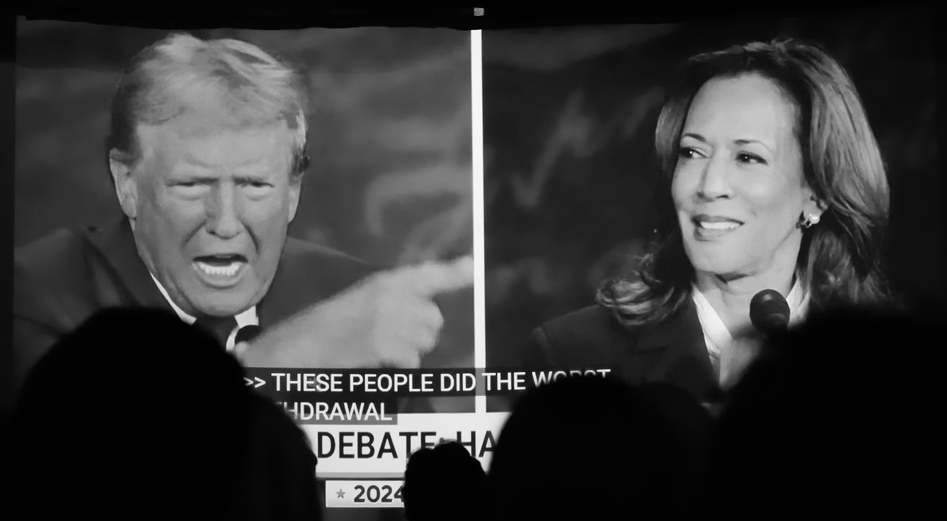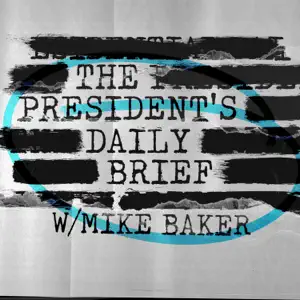
Time to end secret data laboratories—starting with the CDC
The American people are waking up to the fact that too many public health leaders have not always been straight with them. Despite housing treasure…
Thought Leader: Marty Makary

If you’re wondering why the past two weeks in American politics strike you as unprecedented, it’s because you weren’t around in 1933. No, I am not talking about Germany in 1933 (please can The New Yorker finally retire its absurd “Trump is Hitler!” analogy). I am talking about the United States in 1933 — to be precise on March 4 of that year, the day an equally radical administration began 100 days of national transformation.
In fact, “national consecration” was the phrase Franklin Delano Roosevelt used in his fiery, uplifting inaugural address. But what he immediately set about was to recast fundamentally the scope and structure of the federal government. To this day, FDR still holds the record for the largest number of executive orders in the first hundred days of a presidency: 99, compared with Joe Biden’s 42 and Trump’s 33 in his first term. But that record is about to be broken by Trump 2.0.
It is worth reflecting on the speed with which the New Deal was rolled out. On day one, Roosevelt proclaimed a four-day national “bank holiday” to end the disastrous bank runs that were sucking the cash out of US economic life. At a special session on March 9, Congress passed the Emergency Banking Act — the first of 15 major legislative measures enacted in the first hundred days.
• Gerard Baker: Strongman Trump erodes US liberal instincts
There was an “Act to maintain the credit of the United States Government”, which authorised spending cuts. The Cullen-Harrison Act legalised the sale of beer and wine for the first time since Prohibition had begun in 1920. The Agricultural Adjustment Act created a new system of support for farmers.
Other acts created the Civilian Conservation Corps; the Federal Emergency Relief Administration; the Federal Deposit Insurance Corporation; the National Recovery Administration; the Public Works Administration; and the Tennessee Valley Authority — the largest government-owned industrial enterprise in American history.
The following year saw the creation of the Securities and Exchange Commission and the Federal Communications Commission. In 1935 came the crowning glory of the New Deal: social security, the US equivalent of the state pension. To an extent that few people today appreciate, many of the distinctive features of the modern federal government date from FDR’s New Deal. Even the Federal Bureau of Investigation (FBI) and the expansion of the exceptionally large US prison system date from the 1930s.

As I said, Donald Trump seems intent on beating Roosevelt’s record. Since his inauguration, in just ten days, there have been 64 executive orders, 20 of them relating to the structure and running of the government itself, including five getting rid of every Diversity, Equity and Inclusion (DEI) programme; ten on national security and foreign policy; nine on immigration; and six apiece on the economy and energy.
The way to think about Trump 2.0 is as the New Deal reversed. If FDR began the vast expansion of federal agencies that continued in the 1960s and 1970s, DJT is attempting to turn back the clock: to shrink the federal bureaucracy with a barrage of presidential decrees.
Consider the sheer range of targets Trump has hit so far. He has imposed a hiring freeze; a regulatory freeze; an end to working from home; an end to the “weaponisation” of the government (meaning the “lawfare” waged against him by the Department of Justice); a ban on federal censorship; even a rule that agencies should no longer be housed in ugly modern buildings. Where Roosevelt created a host of new agencies, Trump has created just one, the Department of Government Efficiency (Doge) — the sole function of which is to shrink the rest of the government by making it more tech-savvy.
In their own right, the five anti-DEI executive orders, which end not just DEI but also the 60-year-old policy of affirmative action, represent a counter-revolution in government of historic significance, as Christopher Caldwell pointed out in The Free Press.
There are other resemblances between DJT and FDR. Roosevelt sold his revolution to the public with cosy, folksy “fireside chats” on the radio. Trump’s equivalent are the “truths” he posts on Truth Social, the platform he created when he was kicked off Twitter in January 2021. FDR faced opposition. In February 1933, he narrowly escaped an assassination attempt by Giuseppe Zangara. In May 1935 the Supreme Court declared the act establishing the National Recovery Administration unconstitutional.

A 40 per cent cut in spending on veterans’ benefits sparked a successful popular backlash. The equivalent resistance to Trump will come from lower, more liberally inclined courts, and from the public sector unions, as well as the legacy media.
True, Roosevelt enjoyed much larger majorities in the Senate (59 of 96 seats) and House (nearly three-quarters of 405 seats). But that did not make Congress a rubber stamp. Democrats were deeply divided and often unruly. He had to make frequent use (or at least threaten to use) his veto power, and even more frequent use of presidential patronage to buy votes. But there are two much bigger differences. First, Roosevelt was sworn in near the end of the Great Depression, the worst period of economic contraction since the Industrial Revolution. Trump is coming in after a sustained post-pandemic boom that has defied what most economists regarded as the gravity of higher interest rates.
Second, on foreign policy FDR started out as a pygmy. Apart from his early “Good Neighbor” policy with Latin America, he was a study in weakness. He slashed military spending by 29 per cent between 1932 and 1934. He resumed relations with the Soviet Union in November 1933, disregarding the evidence of Stalin’s evil. The isolationist Neutrality Acts prevented arms exports. In practice, the first Roosevelt term was the most isolationist in American history. He “torpedoed” the World Economic Conference held in London in July 1933. He also raised tariffs even higher than the Smoot-Hawley Act of 1930.
Trump, by contrast, has returned to Washington as commander-in-chief in such a belligerent mood that it smacks of hubris. You might think he had enough on his plate with an axis of authoritarians that threatens not only Ukraine and Israel, but also Taiwan and the Philippines. But Trump seems to be enjoying smacking down the leaders of little countries, notably Colombia, Denmark and Panama.

His trolling of the outgoing Canadian prime minister, Justin Trudeau, was a grotesque way to treat a neighbouring state with which the US has more in common than just a border. His brusque insistence that Binyamin Netanyahu should settle with the terrorists of Hamas was unnerving to staunch supporters of Israel. Trump has been tougher on Russia than expected; softer on China and Iran. If this is a national security strategy, its logic is obscure.
Roosevelt is fondly remembered today. But it is not because the New Deal worked. Economically, it was largely unsuccessful. Recovery came only when the US belatedly but massively armed itself against the threat posed by the Axis powers. And nostalgia for FDR has much more to do with his deft wartime leadership than with the bureaucratic creations of his first 100 days.
What does that imply for the way Trump will be remembered? To answer that question, one must first rid oneself of what I call the Woodward Illusion. For half a century, Americans have been encouraged to think of their government as a real-life version of the TV drama The West Wing. Each president receives a minimum of one bestselling book by the journalist Bob Woodward.
There’s a monarchical figure called the president. The drama plays out in his White House. There are two factions: the Good Guys (officials willing to talk to Woodward) and the Bad Guys (their enemies). Sometimes the king himself is wicked (Nixon); sometimes he is admirable but flawed (Clinton); sometimes he is in over his head (Ford, Bush Jr). But the cast of characters is manageably small. And there is usually one big issue (eg, Bush Jr and the War on Terror).
In the real world, the US federal government is quite different. The president sits atop a sprawling “org chart”. There are 15 executive departments and 430 federal agencies — 229 agencies and 201 sub-agencies. The process whereby the executive branch constantly subdivides itself like some kind of rapidly growing cellular organism can be traced back to FDR. Within the White House itself there is a National Security Council and a National Economic Council, to name just two sources of presidential advice.
The true role of the president is to try somehow to ensure that this vast array of institutions collectively functions in ways that vaguely resemble the platform he campaigned on. More accurately, the president acts as the arbiter when the collisions between competing agencies cannot be sorted out within the bureaucracy.
And this is just the executive branch. At the far end of the National Mall is Congress, which the constitution gives the power to make laws. The Supreme Court has the final say if a presidential order or act of Congress is challenged as unconstitutional or illegal. And let’s not forget an equally independent body, not foreseen by the founding fathers and established only on the eve of the First World War: the Federal Reserve, which has the responsibility to influence the rates of inflation and unemployment and determines the ease or difficulty with which the Treasury can fund its deficit.
Yet the org chart is misleading. First, only a small fraction of key positions have been filled. Of 1,300 that need Senate confirmation, we have six confirmed, 70 under consideration, 38 awaiting formal nomination — and 569 without a Trump nominee. And the confirmation process gets slower every time. Trump 1.0 managed just 238 confirmations in his first year.

Second, with all this frenetic activity, snafus are inevitable. On Wednesday the White House Office of Management and Budget had to rescind a memo issued two days before that had frozen federal grants and loans. Did Trump even know about this memo (OMB Memorandum M-25-13)? Unlikely.
Third, as is always the case, even those people hired by a president break down into factions, and these are not necessarily congruent with the org chart. At present, I see the emergence of about six distinct factions:
Henry Kissinger once memorably observed that there is “no such thing as an American foreign policy”. There is, he wrote, only “a series of moves that have produced a certain result” which they “may not have been planned to produce” and to which “research and intelligence organisations, either foreign or national, attempt to give a rationality and consistency … which it simply does not have”.

The title of the 1968 essay where those lines appeared was Bureaucracy and Policy Making. The key to all administrations is how far they can manage a bureaucracy of career officials who like nothing better (as Kissinger wrote in his memoirs) than “to confront the policymaker with the [three] choices of nuclear war, present policy, or surrender”.
George W Bush once defined the role of the president as to be “The Decider”. As FDR’s biographer James MacGregor Burns showed, Roosevelt derived his power from a certain amount of organisational chaos. He would give three jobs to one man and one to three men, then see what the ensuing competition would produce. Then he would decide. But FDR also knew how to inspire, despite being confined to a wheelchair — or perhaps because he had overcome polio with his joie de vivre undimmed. “After spending an hour with the president,” an ordinarily sober agency chief exclaimed to a friend in 1933, “I could eat nails for lunch!”
Trump 2.0 unquestionably has something of that about him, unlike the thin-skinned and edgy first-term version. Surviving assassination and securing decisive re-election have put a spring in his step. He has shed pounds. But can all this new energy be channelled into effective decision-making? In his first term, Trump never allowed his chief of staff to be an effective gatekeeper.

Like some of the American artificial intelligence models the Chinese have been so busy copying, the president is open-source; too many people can get to him. And he is liable to be impressed by anyone who can convey their pitch concisely and amusingly. Whether or not Susie Wiles can do better as chief of staff than her four predecessors — Reince Priebus, John Kelly, Mick Mulvaney and Mark Meadows — remains to be seen. Battle number one is to keep Elon out of the White House, and the jury’s out.
What seems more than likely, then, is that we shall end up with a national security strategy in the Kissingerian sense — “a series of moves that have produced a certain result” which they “may not have been planned to produce”.
FDR did not set out in 1933 to become the architect of victory in a world war 12 years later. The goals of the New Deal were 100 per cent domestic. DJT’s Art of the New Deal is an equal and opposite phenomenon, aiming to shrink the government but expand US power from the Panama Canal to Greenland. We are clearly in for as frenetic a hundred days as our grandparents witnessed 92 years ago. But where will it lead? The law of unintended consequences is a binding constraint, even on the most powerful man in the world.
This article is written by WWSG exclusive thought leader, Niall Ferguson.
Time to end secret data laboratories—starting with the CDC
The American people are waking up to the fact that too many public health leaders have not always been straight with them. Despite housing treasure…
Thought Leader: Marty Makary
David Frum: How Harris Roped a Dope
This piece is by WWSG exclusive thought leader, David Frum. Vice President Kamala Harris walked onto the ABC News debate stage with a mission: trigger…
Thought Leader: David Frum
Michael Baker: Ukraine’s Faltering Front, Polish Sabotage Foiled, & Trump vs. Kamala
In this episode of The President’s Daily Brief with Mike Baker: We examine Russia’s ongoing push in eastern Ukraine. While Ukrainian forces continue their offensive…
Thought Leader: Mike Baker

